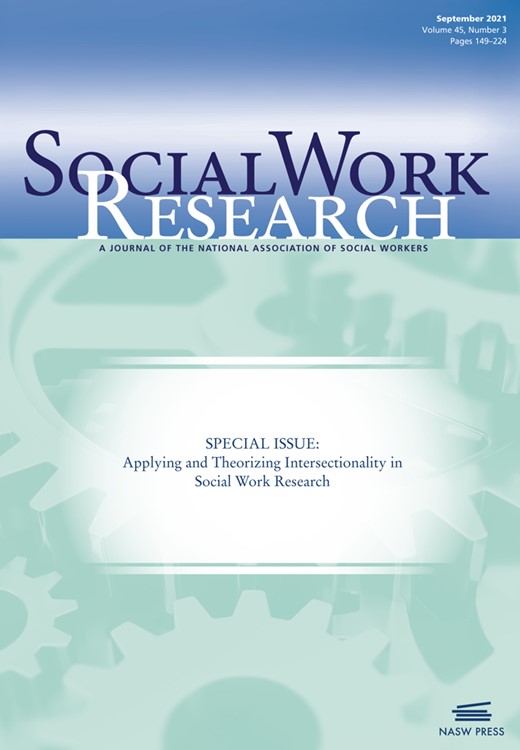-
Views
-
Cite
Cite
Sara Goodkind, Rachel E Gartner, Leah A Jacobs, Dominique Branson, Jorden King, Siera Meaux, Elizabeth Miller, Making AIMS Explicit: Establishing Intersectionality Criteria for Gender Equity Analyses, Social Work Research, Volume 45, Issue 3, September 2021, Pages 169–186, https://doi.org/10.1093/swr/svab013
Close - Share Icon Share
Abstract
Social work researchers often conduct population-level analyses of equity, sometimes focusing on how social and economic well-being are differently experienced depending on gender. In response to the United States’ refusal to ratify the United Nations’ Convention on the Elimination of All Forms of Discrimination Against Women, city-level campaigns began conducting gender equity analyses to highlight and address inequality. To date, these analyses have largely focused on gender alone, affording little attention to other axes of inequality. This article argues that theories of intersectionality offer a conceptual antidote to this narrow focus on gender. Drawing on extant literature, authors developed four criteria to guide intersectional gender equity analyses: (1) analyzes power, (2) interprets population and phenomena in context, (3) mutually constituted and interdependent category use, and (4) strategic and transparent social justice goals (which can be abbreviated as AIMS). Taking a metaevaluation approach, they applied the AIMS criteria to assess existing gender equity analyses. Results indicate ways in which these criteria can be met and the implications of taking intersectional approaches. Ultimately, the AIMS criteria offer guidance to social work research that can systematically and intentionally integrate core intersectionality principles and, in turn, support efforts to promote equity in our systems and institutions.





